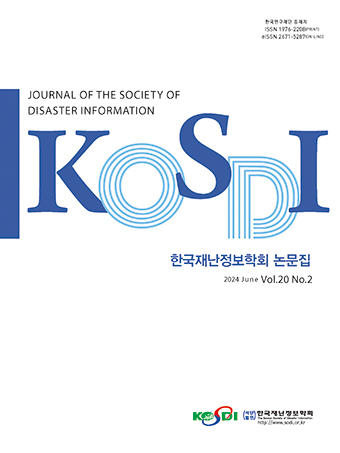Original Article
Abstract
References
Information
Purpose: This study aims to enhance productivity in manufacturing companies while prioritizing worker safety and developing a digital twin-based AI vision to improve quality, creating manufacturing execution systems, and implementing an integrated monitoring system for intelligent manufacturing processes that leverages location positioning technologies. Method: Considering the characteristics of the manufacturing process, particularly for tasks involving injection molding machines, real-time video-based AI detection technology was applied to tailor its design and application to the production line structure, enhancing the specialized detection of defective products. Result: Using the proposed method, the system was developed and implemented, and a comparison of production PPM before and after its adoption demonstrated increased productivity due to reduced defect rates. Additionally, measurements of system response speed confirmed its ability to provide a swift initial response and rapidly disseminate information in the event of an on-site accident. Conclusion: The system developed in this study is expected to serve as a foundation for supporting decision-making in the implementation of manufacturing process systems across various companies.
연구목적: 본 연구는 작업자 안전을 고려하고 제조기업의 생산성 향상, 품질 향상을 위해 디지털 트윈 기반의 AI 비전, 제조 실행 시스템, 위치 측위 기술을 활용한 지능형 제조공정 통합 모니터링 시스템을 개발하는데 목적이 있다. 연구방법: 제조공정 특성상 사출성형기 기반의 생산 작업을 고려하여 생산라인 구조에 맞는 설계 및 적용을 통해 불량품 검출에 특화되도록 실시간 영상 기반의 AI 감지 기술을 적용하였다. 연구결과: 제안된 방법을 통해 시스템 개발 및 적용하였고, 시스템 도입 전/후 생산 PPM 비교하여 불량률 감소에 따른 생산성 향상을 확인하였다. 또한, 시스템 응답 속도 측정을 통해 현장 사고 발생 시 신속한 초기대응 및 상황전파가 가능한 것을 확인하였다. 결론: 본 연구의 시스템은 다양한 제조기업이 제조공정 시스템 도입 시 의사결정을 지원하는 기초자료로 활용될 수 있을 것으로 기대된다.
- Chang, Y.S. (2021). "Technology trends in digital twins for smart cities." Electronics and Telecommunications Trends, Vol. 36, No. 1, pp. 99-108.
- Heo, S.J. (2020). "AI Technology ‧ Market Trends, Focusing on key technologies, market size, and business risks." CIS Issue Report, Vol. 2020, No. 5, pp. 1-13.
- Jo, Y.I. (2023). "Super-large AI and generative AI." Telecommunications Technology Association, TTA Journal, Vol. 207, No. 05/06, pp. 36-45.
- Kang, S.W. (2018). Analysis and Suggestion of Predictive Maintenance Models for Smart Factory. Master's thesis, Yonsei University.
- Kim, I.J. (2022). "Discovering essential AI-based manufacturing policy issues for competitive reinforcement of small and medium manufacturing enterprises." Journal of Quality Management, Vol. 50, No.4, pp. 647-664.
- Kim, K.S. (2020). 3D Machine Vision, The Core Technology of Smart Menu Manufacturing. Korea IR Council, NICE Evaluation Information Co., Ltd., Seoul.
- Lee, S.J., Jo, S,J., Lee, Y,H., Park, J.S. (2023). Manufacturing Engineers Study Digital Transformation and Prospects. Korea Labor Institute, 2023-06, Sejong.
- Lee, S.W., Lee, J.K., Nam, S.J., Park, J.K. (2011). "Application of data acquisition system for MES." Journal of Mechanical Science and Technology A, Vol. 5, No. 9, pp. 1063-1070.
- Noh, K.S., Park, S.H. (2014). "An exploratory study on application plan of big data to manufacturing execution system." Journal of Digital Convergence, Vol. 12, No. 1, pp. 305-311.10.14400/JDPM.2014.12.1.305
- Yoo, J.J., Jo, Y.S. (2014). "Trends in indoor location-based service technology development and standardization." Electronics and Telecommunications Trends, Vol. 29, No. 5, pp. 51-61.
- Publisher :The Korean Society of Disaster Information
- Publisher(Ko) :한국재난정보학회
- Journal Title :Journal of the Society of Disaster Information
- Journal Title(Ko) :한국재난정보학회논문집
- Volume : 20
- No :4
- Pages :786-796
- DOI :https://doi.org/10.15683/kosdi.2024.12.31.786




 Journal of the Society of Disaster Information
Journal of the Society of Disaster Information







